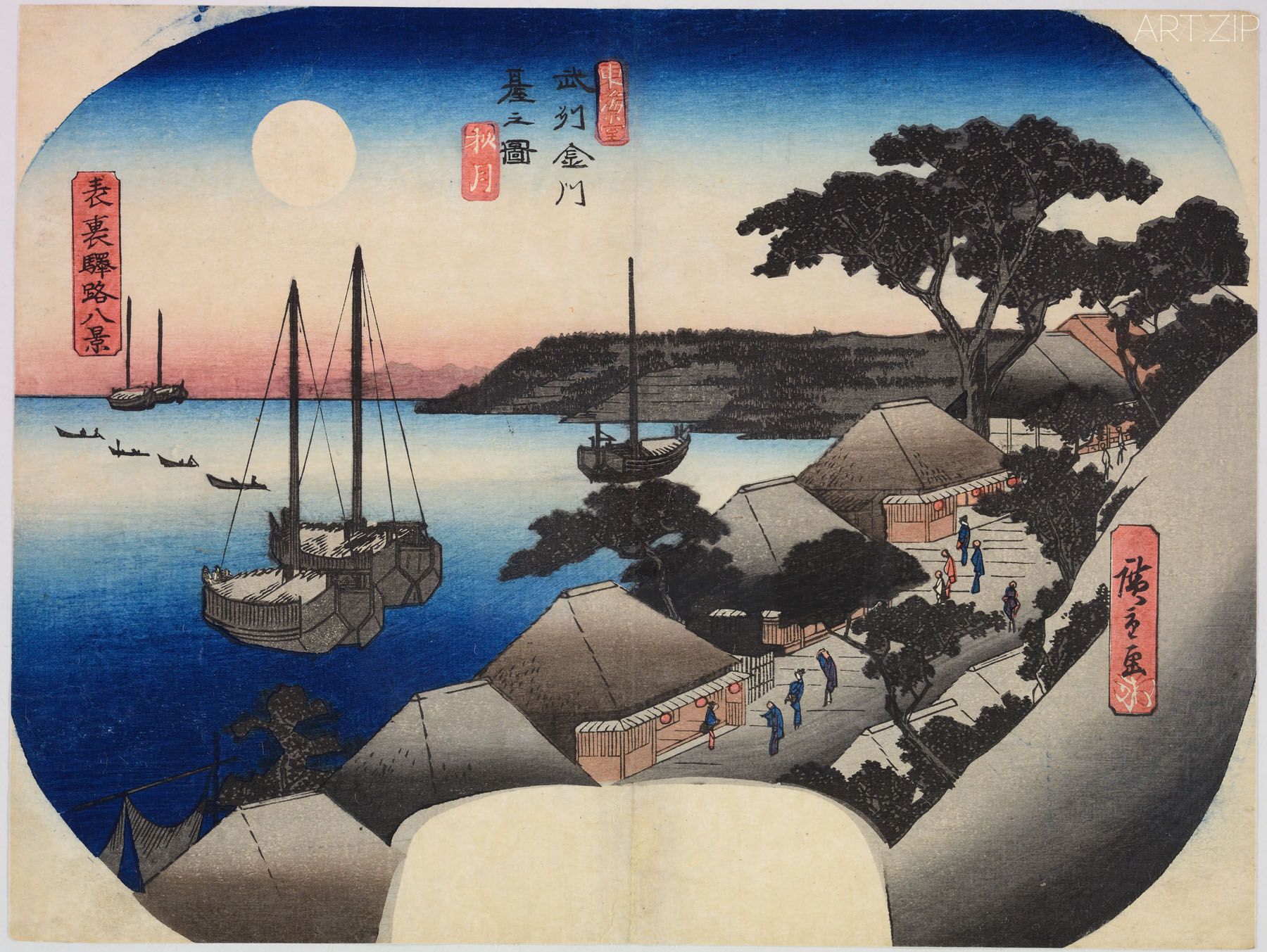
The British Museum Presents Ukiyo-e Master Exhibition: Hiroshige and the “Open Road” Between Cultures
In 2025, the British Museum launches Hiroshige: Artist of the Open Road, a landmark exhibition celebrating the life and legacy of Utagawa Hiroshige (1797–1858), one of Japan’s most influential and beloved ukiyo-e masters. This is the first major exhibition on Hiroshige in London in 25 years, and the first ever held at the British Museum—a truly significant moment.

Pleasure Boats at Ryōgoku in the Eastern Capital, 1832-4 By Utagawa Hiroshige (1797—1858) Colour-woodblock print triptych Collection of Alan Medaugh © Alan Medaugh. Photography by Matsuba Ryōko
A Fitting Theme: “The Open Road” as Artistic and Cultural Journey
The exhibition title, Open Road, perfectly captures the spirit of Hiroshige’s artistic journey. From his iconic Fifty-three Stations of the Tōkaidō to the later One Hundred Famous Views of Edo, Hiroshige portrayed landscapes, cities, and the everyday lives of people across Japan. His works reflect not only a physical journey through the country but also a deeper engagement with change, movement, and belonging in a time of social transformation during the final decades of the Edo period.
The “open road” also represents Hiroshige’s artistic bridge between East and West. Inspired by classical Chinese influences—such as the poetic compositions of Wen Zhengming and the verses of Bai Juyi that appear in his prints—Hiroshige merged traditional aesthetics with his unique visual language. In turn, his prints had a profound impact on Western artists like Vincent van Gogh and James McNeill Whistler, as well as on many contemporary creators, establishing Hiroshige as a key figure in the cultural dialogue between Japan and the world.
The Commercial Path of Art: Prints and Fans as Everyday Beauty
The exhibition also highlights how Hiroshige’s art reached the masses through beautifully crafted woodblock prints and printed handheld fans (uchiwa-e). These works demonstrate how art was made accessible, practical, and affordable, allowing beauty to be integrated into daily life. This blending of function and artistry also reflects the commercialization of art in the Edo period.
Many of the prints on display are being shown to the public for the first time, with several believed to be the only surviving examples of their kind. Their extraordinary rarity underscores the historical and artistic value of the exhibition. These treasures are presented alongside paintings, books, and loans from major collections, offering a comprehensive view of Hiroshige‘s versatility and vision.
A Creative Journey: From Tradition to Global Influence
Born into a samurai family, Hiroshige chose the path of public art, producing thousands of designs that spanned from bustling urban scenes to poetic depictions of nature. His mastery of color and perspective, as well as his subtle lyricism, distinguished him from his contemporaries.
The exhibition traces how Hiroshige’s unique visual style went on to inspire European masters such as Van Gogh and Whistler, and how his artistic DNA continues to appear in the works of contemporary artists like Julian Opie. This influence illustrates not only Hiroshige’s lasting appeal but also his role in shaping global modern art.

Tōkaidō Autumn Moon: Restaurants at Kanagawa, Musashi Province, about 1839 By Utagawa Hiroshige (1797—1858) Colour-woodblock print Collection of Alan Medaugh © Alan Medaugh
大英博物館推出浮世繪大師展:《歌川廣重:風景之路》
歌川廣重與世界的對話
2025年5月1日至9月7日,大英博物館隆重推出展覽《歌川廣重:風景之路》(Hiroshige: Artist of the Open Road),為觀眾呈現日本浮世繪巨匠歌川廣重(1797–1858)豐富而多元的藝術生涯。這不僅是倫敦25年來首個關於廣重的大型展覽,更是大英博物館歷史上首次舉辦的廣重專題展,意義非凡。
開放之路,藝術與文化的多重交匯
展覽英文名以「開放之路」為題,緊扣廣重藝術旅程的核心理念。從《東海道五十三次》到《名所江戶百景》,廣重不僅描繪了日本各地的自然風景與城市面貌,也喚起人們對旅行、變遷與歸屬的思考。在幕府末期社會劇烈轉型的背景下,廣重的作品為當時的民眾提供了心靈的慰藉與美的享受,也成為一種在動蕩時代中延續傳統文化的藝術回應。
廣重的「開放之路」不僅是一條地理意義上的旅途,也是一條藝術創作的探索之路、文化交流的橋梁。他的風景畫不只是現實再現,更融入了詩意與想象。他在畫面中引入中國詩詞與意象,如白居易的詩句、文徵明的構圖精神,展現出深厚的中日文化聯結。同時,這種東方美學也啓發了西方藝術家如梵高、惠斯勒等人的創作,使其成為連接中西文化視覺語言的重要橋梁。

Crane and asters (early 1830s) [left] Three geese and full moon (early 1830s) [centre] Pheasant and chrysanthemums (early 1830s) [right] By Utagawa Hiroshige (1797—1858) Colour-woodblock prints Left: Gift from the collection of Alan Medaugh to the American Friends of the British Museum Centre and right: Collection of Alan Medaugh © Alan Medaugh. Photography by Matsuba Ryōko
本次展覽重點呈現廣重為大眾創作的實用藝術品,包括色彩絢麗的浮世繪版畫與極少在日本以外展出的手持式扇面畫(uchiwa-e)。這些作品兼具藝術性與實用性,既是平民百姓日常生活中的賞心物件,也代表了藝術商品化與美育普及的成功嘗試。
展出的大量版畫作品,多為首次公開展示,其中不乏孤品珍藏。這些藝術品不僅保留了高度的技藝水準與審美價值,也體現了廣重致力於將美術從武士階層帶向大眾的包容性視野。他的「開放之路」,也是一條讓藝術走進尋常人家的現實之路。
藝術家的「創作之路」:從傳統到影響世界
廣重出生於武士家庭,卻選擇投身大眾藝術創作。他的藝術旅程跨越風俗、風景、花鳥等多個領域,展現出卓越的色彩與構圖能力。他的作品超越時代限制,深刻影響了19世紀末至20世紀的歐洲藝術家,尤其是印象派與後印象派代表人物。展覽特別展示梵·高與惠斯勒如何從廣重的版畫中汲取靈感,以及當代藝術家如朱利安·奧培(Julian Opie)等在作品中延續其視覺語言。

The Plum Garden at Kameido from 100 Famous Views of Edo, 1857 By Utagawa Hiroshige (1797—1858) Colour-woodblock print Collection of Alan Medaugh © Alan Medaugh. Photography by Matsuba Ryōko
Text by 撰文 x Shoran Jiang 姜嘯然












